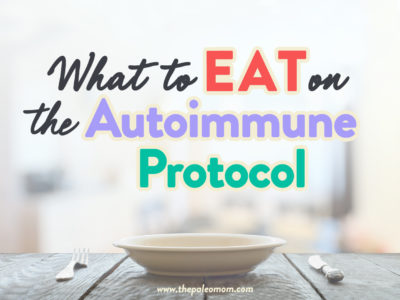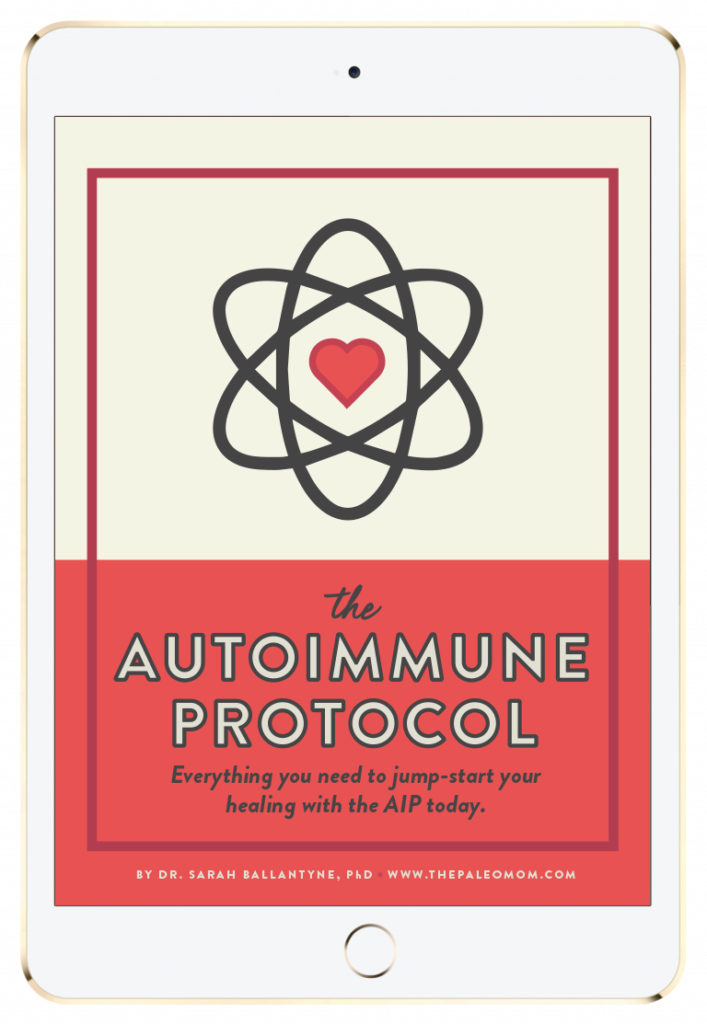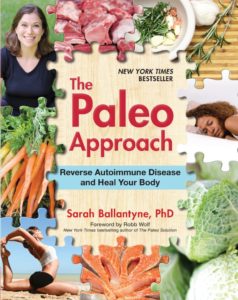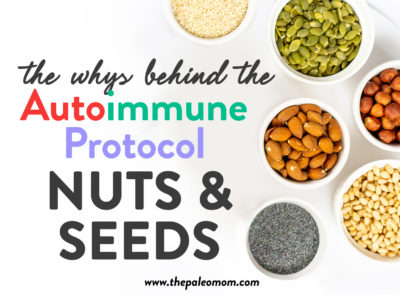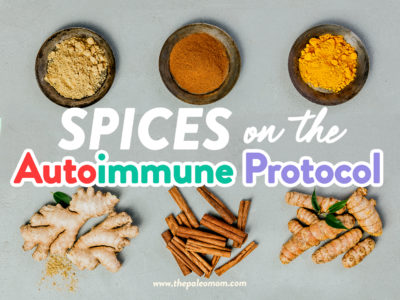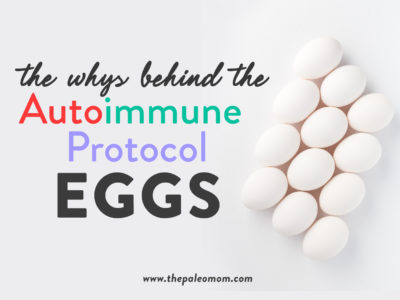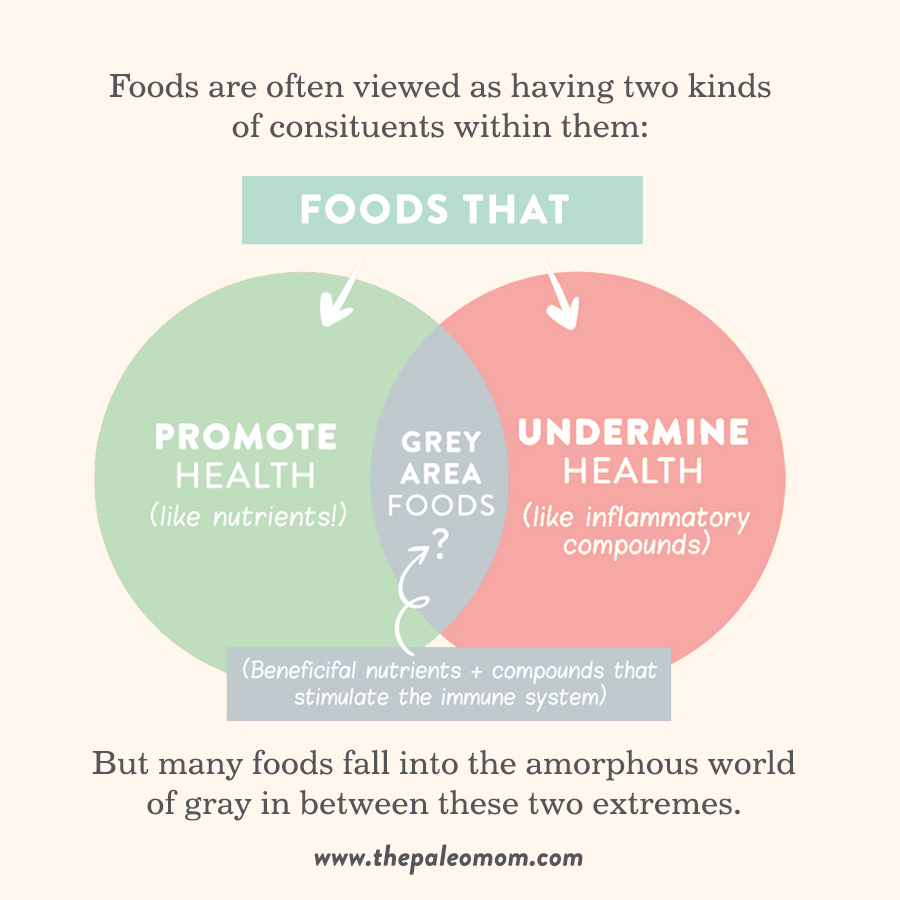 Some foods are obvious wins for a health-promoting diet because they have tons of beneficial constituents and very few or no constituents that undermine health—good examples of these superfoods are organ meats, seafood, and most vegetables. Other foods are obvious fails because they have a relative lack of health-promoting constituents and are rife with problematic compounds—good examples are gluten-containing grains, peanuts, and most soy products.
Some foods are obvious wins for a health-promoting diet because they have tons of beneficial constituents and very few or no constituents that undermine health—good examples of these superfoods are organ meats, seafood, and most vegetables. Other foods are obvious fails because they have a relative lack of health-promoting constituents and are rife with problematic compounds—good examples are gluten-containing grains, peanuts, and most soy products.
Table of Contents[Hide][Show]
But many foods fall into the amorphous world of gray in between these two extremes. Tomatoes, for example, have some exciting nutrients, but they also contain several compounds that are so effective at stimulating the immune system that they have been investigated for use in vaccines as adjuvants (the chemicals in vaccines that enhance your immune response to whatever you’re getting immunized against), see also The WHYs behind the Autoimmune Protocol: Nightshades. The biggest difference between a standard Paleo diet and the Autoimmune Protocol (AIP) is where we draw the line between “yes” foods and “no” foods in order to get more health-promoting compounds and fewer detrimental compounds in our diet. Those who are typically quite healthy can generally tolerate less-optimal foods than those who aren’t. You can think of the Autoimmune Protocol as a pickier version of the Paleo diet; it accepts only those foods that are clear winners in its initial Elimination Phase. The AIP then embraces self-discovery and personalization through methodical reintroductions of these gray-area foods, see The 3 Phases of the Autoimmune Protocol.
Following the AIP diet involves increasing your intake of the obvious wins while simultaneously avoiding foods that may be triggers for your disease or symptoms. I summarized which foods to avoid in AIP Eliminations Summary, so let’s enjoy talking about the incredible variety of nourishing and delicious foods that we get to enjoy on the AIP diet. Win-win!
The foundational foods of the AIP are nutrient-dense, health-promoting foods (for everyone) so it’s worth summarizing why these foods are so important as the basis of any healthy diet, including the Autoimmune Protocol.
Vegetables, Mushrooms & Fruit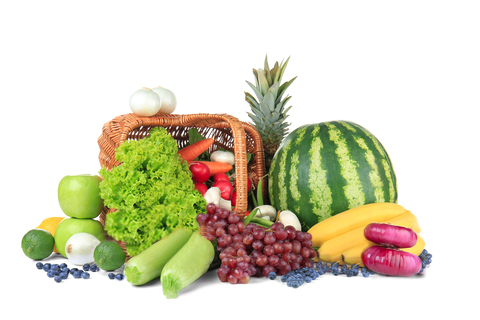
When we look at the statistical relationship between vegetable and fruit consumption and mortality or disease risk, it becomes clear that the more of them we eat, the more protected we are. Every serving of vegetables or fruit reduces the risk of all-cause mortality (a measurement of overall health and longevity) by 5%, with the greatest risk reduction seen when we consume 8 or more servings per day. See also The Importance of Vegetables, Why Fruit is a Good Source of Carbohydrates, and Elevating Mushrooms to Food Group Status.
Study after study shows that higher vegetable consumption reduces the risk of disease, everything from diabetes to osteoporosis to diseases of the gastrointestinal tract to cardiovascular disease to cancer to autoimmune diseases.
There are three likely reasons.
First, vegetables and fruit tend to be rich in very important vitamins and minerals, including several that we just can’t get enough of from other foods. See also How Much Meat versus Veggies?
Second, vegetables and fruit contain a variety of beneficial fiber types known to support a healthy diversity of gut microorganisms and to benefit gut health by regulating enteric hormones, peristalsis and supporting detoxification. See also What Is the Gut Microbiome? And Why Should We Care About It? and What Is Fiber and Why Is it Good?
Third, vegetables and fruit are rich in thousands of different beneficial plant phytonutrients, with known antioxidant, anti-inflammatory, and other health-promoting properties. See also The Amazing World of Plant Phytochemicals: Why a diet rich in veggies is so important! and Polyphenols: Magic Bullet or Health Hype?
All of these components add up to serious benefits for people who include abundant vegetables and fruit in their diets.
Although “fruit and vegetables” are often lumped together when talking about the health benefits of plant foods, and the assumption is usually that these benefits are attributable mainly to veggies, fruit are independently beneficial! Eating at least 3 servings of fruit per day is associated with diverse health benefits, although it’s also important to limit fruit servings such that fructose intake stays below 40 grams daily (and in the neighborhood of 20 grams is likely optimal fructose consumption). Depending on the fruit, that sets a limit to 5 to 8 servings of fruit daily. See also Why Fruit is a Good Source of Carbohydrates and AIP FAQ: Carbohydrate Intake on the Autoimmune Protocol.
Save 70% Off the AIP Lecture Series!
Learn everything you need to know about the Autoimmune Protocol to regain your health!
I am loving this AIP course and all the information I am receiving. The amount of work you have put into this is amazing and greatly, GREATLY, appreciated. Thank you so much. Taking this course gives me the knowledge I need to understand why my body is doing what it is doing and reinforces my determination to continue along this dietary path to heal it. Invaluable!
Carmen Maier

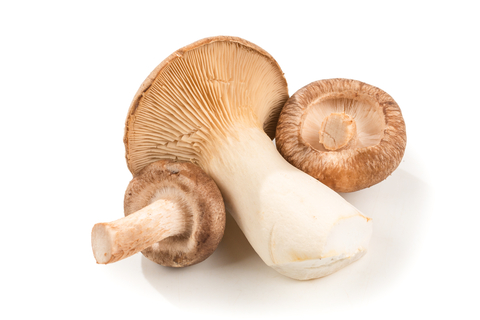 It’s also worth noting that mushrooms are neither vegetable nor fruit, but fungi! As such, it shouldn’t be a surprise that they contain unique phytochemicals and fiber types not found anywhere else in the food supply, in addition to providing a tantalizing density of essential nutrients. In fact, we can all benefit from eating a variety of whole mushrooms, ideally daily. See also Elevating Mushrooms to Food Group Status
It’s also worth noting that mushrooms are neither vegetable nor fruit, but fungi! As such, it shouldn’t be a surprise that they contain unique phytochemicals and fiber types not found anywhere else in the food supply, in addition to providing a tantalizing density of essential nutrients. In fact, we can all benefit from eating a variety of whole mushrooms, ideally daily. See also Elevating Mushrooms to Food Group Status
While the AIP does not include hard-and-fast portion rules, this is why I generally recommend a rough (no obsessing allowed, and it’s totally okay to increase consumption gradually) goal of 8+ servings of vegetables plus 3+ servings of fruit plus 1+ servings of mushrooms daily. A serving is 2 cups for leafy greens, one cup for chopped raw veggies or mushrooms, or half a cup for chopped cooked veggies, mushrooms or fruit. A good way to achieve this goal is by filling three-quarters of every plate with a variety of veggies and fruit, hence my favorite hashtag #threequartersveggies
However, simply eating “more fruit and vegetables” isn’t quite sufficient to get the full range of benefits that these plant foods have to offer. Not only are fruits and vegetables categorically very different from each other in terms of the compounds they contain, but individual fruits and vegetables each have their own unique nutrient composition, making different plant foods independently beneficial rather than interchangeable—and underscoring the concept that variety is key! Learn more with The Gut Health Guidebook.
Rather than simply aiming for 8 servings of vegetables per day, it’s best to eat a serving or two from most of the vegetable families most days:
- cruciferous vegetables
- the parsley family
- the onion family
- the ginger family
- leafy greens
- roots and tubers
- winter squash
- sea vegetables
- and others!
It’s also preferable to choose from the different fruit families when choosing which fruits to eat for those three-ish daily servings:
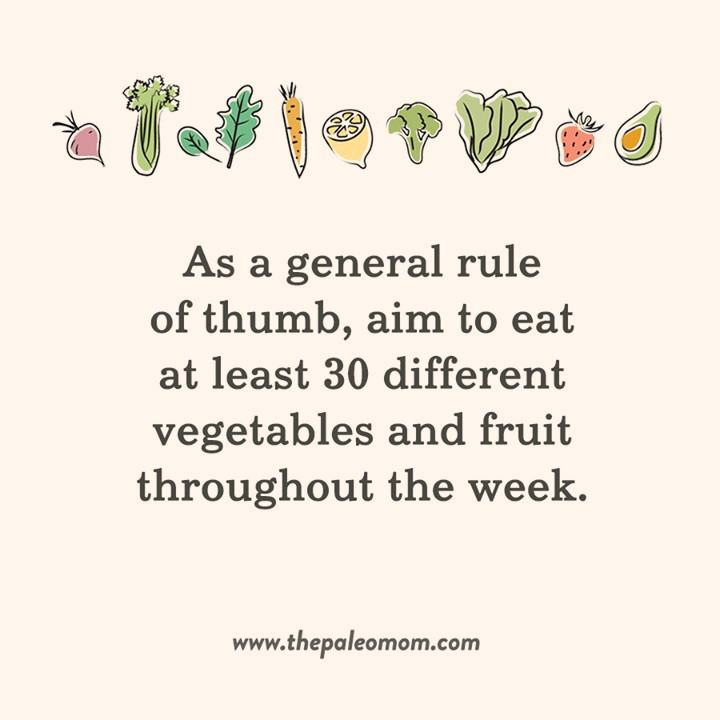 Finally, it’s beneficial to eat at least one serving of mushrooms daily, making sure to vary the type you’re consuming.
Finally, it’s beneficial to eat at least one serving of mushrooms daily, making sure to vary the type you’re consuming.
In addition, within each family of veggies and fruit, try to mix it up day to day, so don’t always choose broccoli as your cruciferous veggie, or naval orange as your citrus, and if having two servings of roots and tubers per day, choose two difference ones.
It really doesn’t matter if you opt for raw versus cooked vegetables, mushrooms and fruit, although it’s always best to choose whole foods rather than juices. Because cooking can transform some nutrients, and because raw and cooked fiber impact the gut microbiome slightly differently, you can maximize benefits by sometimes choosing raw and varying cooking methods. See also Is It Better to Eat Veggies Raw or Cooked?
A good goal is to aim to eat at least 30 different vegetables, mushrooms and fruits throughout the week. One way to achieve this is “one of each” shopping. While walking up and down the produce aisles in the grocery store, put one (bunch, bag, head, pound, etc.) of each type of vegetable and fruit you see into your shopping cart! See also TWV Podcast Episode 424: 30 Fruits and Vegetables a Week?!
Seafood
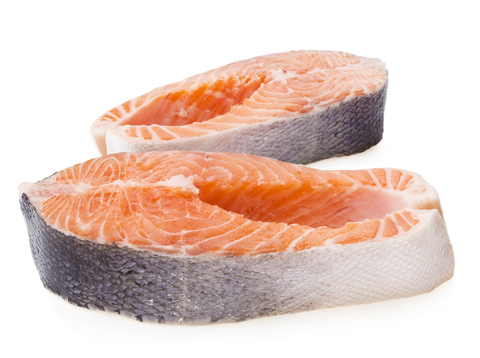 Fish and shellfish are not only nutrient-dense sources of highly-digestible complete protein, but they’re outstanding sources of important immune health nutrients in which we are commonly deficient.
Fish and shellfish are not only nutrient-dense sources of highly-digestible complete protein, but they’re outstanding sources of important immune health nutrients in which we are commonly deficient.
Fish is a great source of vitamins B1, B2, B3, B6, B9, B12 and E, zinc, phosphorus, magnesium, iron, copper, potassium and selenium, with oily cold-water fish also providing substantial amounts of vitamin A and vitamin D. Fish with bones remaining, such as canned salmon and sardines, are the best dietary sources of calcium in the food supply. And marine fish are an excellent dietary source of iodine. See also Why Fish is Great for the Gut Microbiome and The Importance of Fish in Our Diets
Shellfish are extremely rich sources of vitamin B12, zinc, copper and selenium while also providing impressive amounts of vitamin A, vitamin C, vitamin D, iron, copper, calcium, phosphorus, potassium, magnesium, manganese, iodine and selenium. Shellfish also contain smaller but still notable amounts of vitamins B1, B2, B3, B5, B6, and B9, while also providing dozens of trace minerals. See also Oysters, Clams, and Mussels, Oh My! Nutrition Powerhouses or Toxic Danger?
Fish and shellfish are also our dominant dietary sources of the long-chain omega-3 fatty acids DHA and EPA, which block multiple inflammation pathways in our cells. Deficiencies in these anti-inflammatory omega-3 fats have been linked to dyslexia, violence, depression, anxiety, memory problems, Alzheimer’s disease, weight gain, cancer, cardiovascular disease, stroke, eczema, allergies, asthma, inflammatory diseases, arthritis, diabetes, autoimmune diseases, and many others—so it’s easy to see why getting enough of them is important. See also The Importance of Fish in Our Diets

Fish protein has also specifically been linked to improvements in inflammation, metabolic syndrome, osteoporosis, insulin resistance, obesity-related comorbidity and cancer risk. And, scientific studies show that this may be mediated through the gut microbiome. In a mouse study, researchers found that a diet containing protein from lean seafood (a combination of fish and shellfish) was less obesity-producing and supported higher levels of probiotic species of Bacteroidales and Clostridiales compared to protein from lean meats (a mixture of chicken, pork, and beef). Another study comparing protein from fish, chicken, casein, soy, pork, and beef found that the fish protein (along with chicken protein) led to a greater abundance of beneficial Lactobacillus species than the other proteins. See also Why Fish is Great for the Gut Microbiome
Worried about toxins and pollutants in fish and shellfish? Almost all of these fears are unfounded and discussed in detail in: The Mercury Content of Seafood: Should we worry?, Should We Be Worried About Radiation from Fukushima?, Oysters, Clams, and Mussels, Oh My! Nutrition Powerhouses or Toxic Danger?, and TPV Podcast Episode 366: Seafood Safety Concerns.
In fact, human studies show that the more seafood we consume the better, which would not be the case if there were problematic levels of toxins in seafood. A 2017 meta-analysis showed that, compared with little or no intake, modest fish consumption (40 grams, or about 1.5 ounces, per day) results in a 9% decrease in all-cause mortality. This benefit was largely (but not entirely) attributable to DHA and EPA intake, which when analyzed separately, revealed a 7% lower risk of all-cause mortality for every 0.2 grams per day increase in dietary intake! Another 2017 analysis showed a nearly linear relationship between increased fish consumption and reduced all-cause mortality, indicating the more the better! See also The Importance of Fish in Our Diets
All in all, consuming at least 3 servings of fish per week plus a weekly serving of shellfish is necessary to meet the body’s needs for omega-3 fat and essential minerals.
 Organ Meat
Organ Meat
Compared to muscle meat, organ meat is more densely packed with just about every nutrient, including heavy doses of vitamins B1, B2, B6, B9, and the very important B12. Organ meat is also loaded with minerals like phosphorus, iron, copper, magnesium, iodine, calcium, potassium, sodium, selenium, zinc, and manganese and provides the important fat-soluble vitamins A, D, E, and K. Organ meat is known to have some of the highest concentrations of naturally occurring vitamin D of any food source. Organ meat also contains high amounts of essential fatty acids, including arachidonic acid and the omega-3 fats EPA and DHA.
Liver is one of the most concentrated sources of vitamin A of any food. In addition to containing dozens of important vitamins and minerals, it is an outstanding source of vitamin D, vitamin B12 (and other B vitamins), copper, potassium, magnesium, phosphorous, manganese, and iron in the heme form that is readily absorbed and used by the body. Kidney is particularly high in vitamin B12, selenium, iron, copper, phosphorus, and zinc. Even though heart is technically a muscle, it  also is a superfood. Heart is a concentrated source of the supernutrient coenzyme Q10 (CoQ10, important for cardiovascular health and also rich in kidney and liver) and contains an abundance of vitamin A, vitamin B12, folate, iron, selenium, phosphorus, and zinc. It’s the number-one food source of copper. Heart also contains twice as much collagen and elastin than regular muscle meat (which means that it is rich in the amino acids glycine and proline), which are essential for connective tissue health, joint health, and digestive health. See also Why Everyone Should Be Eating Organ Meat, The Best Foods and Nutrients to Support Liver Detox, Tips and Tricks for Eating more Offal, Gelatin vs Collagen vs Bone Broth, and 8 Nutrients for Leaky Gut.
also is a superfood. Heart is a concentrated source of the supernutrient coenzyme Q10 (CoQ10, important for cardiovascular health and also rich in kidney and liver) and contains an abundance of vitamin A, vitamin B12, folate, iron, selenium, phosphorus, and zinc. It’s the number-one food source of copper. Heart also contains twice as much collagen and elastin than regular muscle meat (which means that it is rich in the amino acids glycine and proline), which are essential for connective tissue health, joint health, and digestive health. See also Why Everyone Should Be Eating Organ Meat, The Best Foods and Nutrients to Support Liver Detox, Tips and Tricks for Eating more Offal, Gelatin vs Collagen vs Bone Broth, and 8 Nutrients for Leaky Gut.
Eating organ meat regularly is one of the keys to a nutrient-sufficient diet.
A good goal is to eat organ meat in the same dietary ratio as the ratio of organ meat to muscle meat found in the whole animal, i.e., snout-to-tail eating. This approach is better for the environment and better for our health! For most animals raised for meat, as well as wild game, 20 to 25% of the edible portion is organ meat, which means that a good goal would be for about one-fifth to one-quarter of the meat we eat to be offal. If you eat fish several times a week and meat the rest of the time (and you eat three meals a day), this translates to about four meals of offal per week.
Gut Health Superfoods
What makes a food a gut health superfood? Any food that increases microbial diversity of the gut microbiome and supports the growth of key probiotic strains (like Lactobacillus and Bifidobacterium) is definitely a winner! Additionally, foods rich in nutrients known to improve gut barrier health are beneficial not just for the gut, but also for immune regulation and whole-body health. If you’re interested in a deep dive into gut health superfoods, you’ll love The Gut Health Guidebook and The Gut Health Cookbook (you can save $10 off both together with The Gut Health Collection).
Vegetables, Fruit & Mushrooms, as discussed above, are rich in diverse types of fiber (which feeds diverse strains of bacteria because different bacteria have different substrate, i.e., food, preferences) and phytonutrients (which also support microbial diversity and increase growth of key probiotic strains). When fruit and vegetable fiber is fermented by our gut bacteria, it produces short-chain fatty acids (acetate, butyrate and propionate), which are extremely beneficial energy sources for gut barrier and immune cells. The various families of vegetables and fruits are independently beneficial for gut microbiome composition, so aim to consume from as many different veggie and fruit families daily as possible. Variety is super important, so aim to consume at least 30 different veggies, fruit and mushrooms each week. Mix up eating raw or cooked. See The Importance of Vegetables, Why Fruit is a Good Source of Carbohydrates, Elevating Mushrooms to Food Group Status, The Health Benefits of Cruciferous Vegetables, The Health Benefits of Leafy Greens, Why Root Veggies Are Great for the Gut Microbiome, The Health Benefits of Winter Squash, The Health Benefits of Alliums (Onion Family), The Health Benefits of Berries, The Health Benefits of Melons, The Health Benefits of Tropical Fruits, The Health Benefits of Stone Fruits, The Health Benefits of Apples, The Health Benefits of Citrus Fruits, The Health Benefits of Bananas and Plantains, Why Seaweed is Amazing!, TWV Podcast Episode 424: 30 Fruits and Vegetables a Week?! and Is It Better to Eat Veggies Raw or Cooked?.
Fish & Shellfish, as discussed above, are rich in vitamin A and vitamin D which are both essential for gut barrier health but also improve gut microbiome composition. Fish is our best dietary source of omega-3 fats, which increase gut microbial diversity and can even reverse gut dysbiosis. In addition, the protein in fish is uniquely beneficial for the gut microbiome, above and beyond any other type of protein. Shellfish is particularly rich in zinc (especially oysters!). In addition to its essential role in immune health, zinc affects the composition of the gut microbiome (zinc deficiency causes loss of microbial diversity) and the integrity of the gut barrier (zinc deficiency causes increased intestinal permeability). Zinc has a targeted effect on tight junction proteins and helps regulate their permeability, and can also offset the effects of agents that impair barrier integrity (such as proinflammatory cytokines). See also What Is A Leaky Gut? (And How Can It Cause So Many Health Issues?), 8 Nutrients for Leaky Gut, Why Fish is Great for the Gut Microbiome, The Importance of Fish in Our Diets, and Oysters, Clams, and Mussels, Oh My! Nutrition Powerhouses or Toxic Danger?
Organ Meat, as discussed above, are some of the most nutrient-dense foods on the planet, including being rich in vitamins and minerals that are essential for a healthy gut microbiome and gut barrier. In fact, emerging evidence shows that our gut microbiota, too, require certain nutrients—and that these are essential for their growth, health, and metabolism. And while our gut bacteria synthesize certain vitamins (especially B vitamins and vitamin K2), they must necessarily obtain most essential nutrients from the food that we eat. As with the rest of our bodies, the state of our gut microbiota gets impacted when we consume either too little or extreme excess of these nutrients. The nutrients that are particularly important to support a healthy and diverse gut microbiome are: vitamins A, D, B12 and E, calcium, copper, iron, magnesium, molybdenum, phosphorous, potassium, selenium and zinc. See 8 Nutrients for Leaky Gut and learn more in The Gut Health Guidebook.
Bone Broth is rich in several amino acids important for gut barrier function: glycine (which is also an important anti-inflammatory amino acid), glutamine and arginine. In fact, glutamine deficiency itself can cause increased intestinal permeability. Glutamine and arginine are also essential for a healthy gut microbiome. See also 8 Nutrients for Leaky Gut, Gelatin vs Collagen vs Bone Broth, Why Broth is Awesome, Broth: Hidden Dangers in a Healing Food?, and Bone Broth Risks: Skim the Fat!.
Quality Meat & Poultry also have a place in a gut health-supporting diet because protein is essential for the gut microbiome. Grass-fed meat is particularly high in conjugated-linoleic acid (CLA), a unique fatty acid that’s associated with lower risk of cancer, diabetes, obesity, and cardiovascular disease in addition to being particularly beneficial for the gut microbiome, see Conjugated Linoleic Acid (CLA): A Rockstar Nutrient and Grass-Fed Beef: A Superfood worth the Premium Price. And when it comes to the gut microbiota, chicken appears to be one of the better concentrated sources of protein we can choose, with studies showing chicken protein supports the growth of beneficial Lactobacillus bacteria, as well as Actinobacteria, Proteobacteria and Lactobacillaceae. See also For the Birds? How Poultry Fits Into a Paleo Diet
Extra Virgin Olive Oil increases gut microbial diversity, supports a microbiome profile associated with leanness and a healthy metabolism, and increases growth of key probiotic strains. This is attributable both to the oleic acid content of olive oil and to the high polyphenol content. See Olive Oil Redemption: Yes, It’ a Great Cooking Oil! and 3 Reasons Why Olive Oil is Amazing. Other gut-healthy fats include avocado oil and extra virgin coconut oil, see Coconut and Coconut Oil: Any Truth to the “Pure Poison” Claims?. Also learn more in TWV Podcast Episode 414: Best Cooking Fats for Gut Health.
Honey contains compounds that act as a selective prebiotic for lactic acid bacteria belonging to Lactobacillus and Bifidobacterium, while also inhibiting the growth of undesirable microorganisms that can act as pathogens. Other bee products—propolis and royal jelly—also support key probiotic strains of bacteria while inhibit growth of pathogens and bee propolis has also been shown to increase gut microbial diversity. See also Honey: The Sweet Truth About a Functional Food! and Why Bee Products Are Great for the Gut Microbiome.
Green & Black Tea polyphenols (including epicatechin, catechin, 3-O-methyl gallic acid, gallic acid, and caffeic acid) and their metabolites have been shown to selectively repress the growth of certain undesirable gut microbes (like Clostridium difficile) while increasing the growth of probiotic strains like Bifidobacterium species and Lactobacillus species, and increases production of short-chain fatty acids. See The Health Benefits of Tea.
Herbs and Safe Spices are rich sources of phytonutrients, which improve gut microbiome composition in addition to their antioxidant and anti-inflammatory benefits. See Spices on the Autoimmune Protocol, The Amazing World of Plant Phytochemicals, and Polyphenols: Magic Bullet or Health Hype?
Crickets and Other Insects contain a unique fiber type in their mineral-rich exoskeletons. Studies show that consumption this type of fiber (chitin) protects the gut barrier, promotes the growth of beneficial microbes (including Bifidobacterium, Lactobacillus, Akkermansia, and Bacteroides) while also decreasing the abundance of microbes linked with inflammation. Studies of cricket protein supplementation show similar benefits (hello 5.7-fold increase in Bifidobacterium animalis abundance!) as well as lower levels of inflammation. See Why Crickets Are Great for the Gut Microbiome.
Fermented Foods help to inoculate the gut with new strains of probiotic organisms in addition to being a great source of postbiotics, which support the gut microbiome through microbial cross-feeding. Wild ferments are best: a wild-fermented sauerkraut can contain upwards of 686 (!) different strains of beneficial bacteria and yeast! You’ll get exposed to different strains with every new batch of a wild-fermented vegetable. Plus, kombucha and water kefir have their own signature probiotic strains, including beneficial yeast (Saccharomyces boulardi can inhibit the growth of candida), so the more variety in fermented foods, the better! See The Health Benefits of Fermented Foods and The Health Benefits of Apple Cider Vinegar.
Foods that are particularly beneficial to the gut microbiome but initially eliminated on the AIP can be challenged during the Reintroduction Phase. These include: nuts, seeds, coffee, chocolate, select legumes (especially properly prepared peas, lentils, and chickpeas), grass-fed A2 dairy, the full range of spices, rice (cooked, cooled and reheated), gluten-free oats, corn, pseudograins and nightshades. See also The 3 Phases of the Autoimmune Protocol and Reintroducing Foods after Following the Autoimmune Protocol. Also learn more in The Gut Health Guidebook.
Rounding Out the Diet
There are a few foods to eat in moderation, including unrefined sea salt (see Is Salt Paleo?), natural sugars (see How Does Sugar Fit into a Healthy Diet?), tea (see The Health Benefits of Tea), rendered animal fats and palm oil/shortening (see TWV Podcast Episode 414: Best Cooking Fats for Gut Health), and naturally refined or processed versions of any included foods, typically used as baking ingredients (examples are coconut products, cassava flour, tapioca starch, arrowroot starch, and sweet potato flour). The good news is that this leaves plenty of room to make the occasional AIP treat.
 In the context of a nutrient-sufficient diet, 10% of calories from added natural sugars (which, unlike refined sugars, also contribute some micronutrients) actually gives us quite a bit of room for dessert creativity in the kitchen! If you follow a 2,000 calorie per day, otherwise nutrient-dense, whole-foods diet, up to about 3 tablespoons of honey would qualify. I recommend thinking of this as a maximum for a couple times per week treat, and remembering that the primary criterion for whether or not a diet is health promoting is nutrient sufficiency.
In the context of a nutrient-sufficient diet, 10% of calories from added natural sugars (which, unlike refined sugars, also contribute some micronutrients) actually gives us quite a bit of room for dessert creativity in the kitchen! If you follow a 2,000 calorie per day, otherwise nutrient-dense, whole-foods diet, up to about 3 tablespoons of honey would qualify. I recommend thinking of this as a maximum for a couple times per week treat, and remembering that the primary criterion for whether or not a diet is health promoting is nutrient sufficiency.
In terms of AIP baking ingredients, the more a whole food is refined or processed, even naturally, the more nutrients are stripped out of it, and the more moderation needs to be applied. For example, arrowroot and tapioca starch are refined (concentrated) starches, making them fairly empty calories. A little bit here and there fits into an otherwise nutrient-dense diet, but less processed options (like Otto’s cassava flour and whole vegetable powders) are preferable for cooking or baking foods that will be consumed on a more regular basis.
This might be a great time to emphasize that it only takes a few weeks for our taste buds to adapt to big shifts in our diets. Studies looking at taste adaptation to one of a low-sugar, low-salt, or low-fat diet have shown that over the course of a few weeks (4 to 12, depending on the study), participants develop a preference for the healthier foods they’ve been eating. This is attributable to our taste buds becoming more sensitive. Food familiarity and flavor association with positive experiences (e.g., feeling good physically, the food tasting good, or eating in a positive social environment) is another key driver of food preference. Studies show that with repeated exposure to foods that we innately dislike, we can not only lose our aversions to those foods but we can actually develop a preference for them. In fact, we can learn to like new flavors after trying them as few as four or five times. What does this mean? If you aren’t enjoying the new healthy foods you’re adding to your diet, don’t give up! The more of these healthy foods you eat, the more you’ll enjoy them!
AIP Foods to Eat Summary
In summary, the rules of what to eat are:
- vegetables — as much variety as possible and choosing from as many different veggie families as possible daily, aim for 8+ servings daily
- leafy green vegetables (e.g., spinach, lettuce, kale)
- cruciferous vegetables (e.g., broccoli, cabbage, Brussels sprouts)
- roots and tubers (e.g., sweet potatoes, cassava, beets)
- onion family (e.g., onion, garlic, leek)
- winter squash (e.g., butternut, acorn, spaghetti squash)
- parsley family (e.g., carrot, celery, fennel)
- ginger family (e.g., ginger, turmeric, galangal)
- sea vegetables (e.g., kombu, arame, kelp; note this excludes algae like chlorella and spirulina which are immune stimulators)
- other veggies (e.g., artichoke, asparagus, cucumber)
- fruit — as much variety as possible and choosing from as many different fruit families as possible per day, keeping fructose intake between 10g and 40g daily, typically 3 to 5 servings daily
- berries (e.g., strawberries, blueberries, blackberries)
- melons (e.g., cantaloupe, honeydew, watermelon)
- citrus (e.g., orange, lemon, grapefruit)
- apple family (e.g., apple, pear, quince)
- stone fruits (e.g., peach, cherry, plum)
- tropical and subtropical fruits (e.g., pineapple, mango, banana, papaya)
- high-fat fruits (e.g., avocadoes, olives, coconut)
- mushrooms — ideally a serving or more daily and at least every couple of days, choosing as many different varieties as possible
- herbs and safe spices
- organ meat and offal — aim for 4 or 5 times per week, the more the better
- fish and shellfish — aim for at least 3 times per week, the more the better, wild is best but farmed is fine
- quality meat and poultry — grass-fed, pasture-raised, or wild as much as possible
- healthy fats — extra virgin olive oil is the best choice, with avocado oil and extra virgin coconut oil close seconds
- probiotic/fermented foods — fermented vegetables or fruit, kombucha, water kefir, coconut milk kefir, coconut milk yogurt, supplements
- bone broth and other glycine-rich foods — anything with natural collagen content like joints, skin, organ meat, and seafood)
- gut microbiome superfoods — high-fiber and phytonutrient fruits and vegetables, mushrooms, extra virgin olive oil, fish, shellfish, honey and bee products, fermented foods, edible insects, tea, and bone broth)
- Moderate intake of natural sugars, tea, unrefined sea salt and naturally refined or processed versions of any of the above foods (like arrowroot starch, coconut milk or cassava flour)
- Source the best-quality ingredients you can
- Eat as much variety as possible

